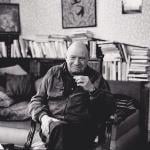 One week comes to its end and a new week is about to begin: Tuesday Kris and I fly for the rest of the week to Dublin Ireland for a conference called Rubicon.
One week comes to its end and a new week is about to begin: Tuesday Kris and I fly for the rest of the week to Dublin Ireland for a conference called Rubicon.
(CNN) — If you’ve been frequenting the sandy beaches along the rugged, Welsh Pembrokeshire Coast in Britain, you might have noticed some mysterious shapes appearing in the sand.These intricate murals are beach-based works of art created by local sand muralist Marc Treanor.Inspired by crop circles, the enigmatic formations that occasionally appear in corn and wheat fields, Treanor forges stunningly intricate patterns and pictures by raking wet sand.When he’s done, Treanor watches as his hard work is consumed by the crashing waves, but he says that’s all part of the experience.“It’s completely part of it, it’s totally integral to the work and the fact it is impermanent and it is temporary,” Treanor tells CNN Travel.That said, he usually has chance to capture his creations on camera for posterity.
[Throckmorton comments:] I suspect that part of the reason plagiarism is a mild sin among Christian writers and publishers is that enforcing the rules would require Christian authors to write their own material. Thus, ghostwriters and researchers would be out of work. Pretend experts and Christian celebrities would have to develop actual skills and find something novel and interesting to say without the help of paid experts and researchers.As illustrated by the above situations, publishers aren’t regularly accountable to the public, nor do they require authors to be accountable. Scott had to go to court to get justice. She couldn’t count on Caine and her Christian publisher to do the right thing. Now that the situation is public, Caine isn’t talking. Although I don’t know what is in mind, her silence gives the appearance that she hopes her popularity will get her through this rough patch.
What has surprised me is that lack of response from Christians on social media to these cases.
A nonprofit in southeast Colorado Springs is giving new meaning to the term “Extreme Makeover.”
In just 10 days, Dream Centers plans to transform the rubbled remains of two methamphetamine houses into a glitzy new community gathering space for Mary’s Home — a faith-based program helping homeless mothers and their children. In doing so, the nonprofit wants to house more mothers who have been living in their cars or on friends’ couches, while helping reinvigorate one of Colorado Springs’ roughest neighborhoods.
“We’re addressing poverty at its roots,” said Brenda Rogers, the program’s executive director.
The project isn’t part of any television show. But the nonprofit’s leaders say it will look no different from an episode of “Extreme Makeover: Home Edition.”
Build one and watch the children:
We’ve known for a while that home libraries are strongly linked to children’s academic achievement. What’s less certain is whether the benefits they bestow have a long-term impact.
A new large-scale study, featuring data from 31 countries, reports they do indeed. It finds the advantages of growing up in a book-filled home can be measured well into adulthood.
“Adolescent exposure to books is an integral part of social practices that foster long-term cognitive competencies,” writes a research team led by Joanna Sikora of Australian National University.
These reading-driven abilities not only “facilitate educational and occupational attainment,” the researchers write in the journal Social Science Research. “[They] also lay a foundation for lifelong routine activities that enhance literacy and numeracy.”
The researchers analyzed data from the Programme for the International Assessment of Competencies. Its surveys, taken between 2011 and 2015, featured adults (ages 25 to 65) in 31 nations, including the United States, Canada, Australia, Germany, France, Singapore, and Turkey.
All participants were asked how many books there were in their home when they were 16 years old. (One meter of shelving, they were told, holds about 40 books.) They chose from a series of options ranging from “10 or less” to “more than 500.”
Literacy was defined as “the ability to read effectively to participate in society and achieve personal goals.” Participants took tests that “captured a range of basic through advanced comprehension skills, from reading brief texts for a single piece of information to synthesizing information from complex texts.”
Numeracy tests measured the “ability to use mathematical concepts in everyday life,” while IT-related tests “assessed the ability to use digital technology to communicate with others, as well as to gather, analyze, and synthesize information.”
The results suggest those volumes made a long-term difference. “Growing up with home libraries boosts adult skills in these areas beyond the benefits accrued from parental education, or [one’s] own educational or occupational attainment,” the researchers report.
Not surprisingly, the biggest impact was on reading ability. “The total effects of home library size on literacy are large everywhere,” the researchers report.
Growing up with few books in the house was associated with below-average literacy rates, while he presence of around 80 books raised those rates to the mean. Literacy continued to increase with the number of reported books up to around 350, at which point it flattened out.
Do not warm urine in this microwave! Those with drug in their system are using some from others but need to warm it up to make it look fresh!
JACKSONVILLE, Fla. – A Florida gas station owner says she is battling a bizarre problem – customers using the microwave to heat urine.
Parul Patel, who owns a BP gas station and convenience store in Jacksonville, told WTLV she’s “sick and tired” of “random people walking [in] and it’s happening every day.”
It’s gotten so bad, Patel says, that she had to post a sign on the microwave that reads, “Only for food use. Do not warm urine.”
It appears the problem isn’t entirely random, however – Patel’s On the Fly convenience store is located steps away from LabCorp, which offers drug testing services, according to the website.
“They become so aggressive with us,” Patel said.
The inspiration for the sign was an incident with a customer who Patel said started cussing at her and saying there was no sign telling her she couldn’t warm pee in the microwave.
LabCorp did not immediately reply to a request for comment.
As reported in the article above, the pay gap between those who complete their college degree as opposed to those who do not, is at an all-time-high. With more college players entering the draft early each year, and the average NFL career spanning less than four years, understanding the importance of having your college degree has never been more vital.
For active and former players, here are three reasons why you should consider going back to school and getting that degree, if you haven’t already:
- The NFL is a job, not a career. 3.3 years! This is a short amount of time for a career, and most likely what you earned in the NFL won’t last for you and your family the rest of your life. On average, college grads earned 56% more than high school grads, according to a 2015 study. Having a successful second career after football is an extremely important part of your transition. Check out this Q&A with Ryan Mundy to see an example of a former player succeeding in his next chapter.
- Continuing education can help you find your interests outside of being a professional athlete. After years of playing the sport you love, the job market, career trends and your own interests may have changed drastically since you were in college. Going back to school for your undergraduate or graduate degree may help you identify new paths you never considered. Continuing your education can also help you find your true passions off the field. Here is a great example of former NFL player Will Poole doing just that.
- Build your skillset before embarking on your own path. We’ve all heard the cautionary tale of players who have launched their own businesses unsuccessfully after leaving the league. Not having the right skillset can be a recipe for failure but can be avoided with education and preparation. Going back to school can give you the tools, professional development and networking opportunities essential to entrepreneurship success.
At The Trust, we assist players in career transitioning and continuing their education. The Trust’s Scholarship Award Benefit is a great resource to help you finish your undergraduate degree or get a graduate degree. If you or a former player you know is interested in going back to school, please call us at 866-725-0063 or email us at [email protected] to learn more.
Sacred music in a secular age, by Randall Balmer:
If there’s a better antidote to the madness emanating from Washington than a choral festival in the medieval chapels of Oxford, England, I can’t imagine what it might be. For three days last week, pilgrims from around the English-speaking world descended for lectures, casual meanderings through streets and alleys and a series of concerts beneath the vaulted Gothic ceilings of Magdalen, Queen’s, Merton, New and Christ Church colleges.
Stephen Darlington, tutor in music at Christ Church, provided an overview of choral music in Oxford over the centuries, with special attention to the English Reformation of the 16th century, when Henry VIII broke with Rome. Reformers in England, led by Thomas Cranmer, archbishop of Canterbury, demanded that church music be written and performed in English rather than Latin for the edification of common people. Cranmer also sought to rein in polyphony, stipulating “for every syllable a note.”
Fortunately, the English composers of the age — John Taverner, Thomas Tallis, John Sheppard, William Byrd and others — generally disregarded Cranmer’s dictum. Sacred music in England survived the Reformation, as the concerts themselves illustrated.
I will almost certainly run out of adjectives to describe the music itself …
But nothing in between — no priest, no Eucharist, no passing of the peace among parishioners — and here is where the festival lost some of its power. Most of the people in attendance, both singers and audience, were there solely for the music. But the music was wrenched out of its liturgical context, stripped of all religious or spiritual meaning. One of the choirmasters acknowledged the disjunction between the performers themselves and what they were singing.
The effect was not unlike Joni Mitchell’s tree museum, or a plane taxiing down the runway but never lifting into the air. Here was sacred music for a secular age, carefully curated from centuries past and meticulously performed. A music museum for the discerning aesthete.
We shouldn’t be surprised, I suppose. The West is still captive to Enlightenment-style rationalism, where faith and belief defy the strictures of positivism. Weekly attendance in the Church of England hasn’t topped a million since 2013, out of a population in excess of 65 million. The prevailing assumption these days is that no clear-minded person can also be a person of faith, that the canons of Enlightenment rationalism serve as the final arbiter of truth and that the realm of the transcendent is the habitation of fools. Darlington’s biggest laugh line was “Well done the clergy” after describing some admittedly risible restrictions on organ music at Lincoln Cathedral in the 16th century. Then he added that he needed to be careful because “there may be some clergy here.”
Priests reduced to caricature. Faith consigned to the dustbin of history. Music as artifact, nothing more.
Call it moral tribalism, but none dare call it reason:
Good as Haidt’s books are, they’re probably too late in offering a solution, and will probably in the future be seen as timely warnings that we as a culture ignored.
And the sewer-fest that is the SCOTUS hearings around Brett Kavanaugh is simply proof of that.
Haidt’s work aims to draw the sting out of our deep differences; to acknowledge that we form tribes, but without having to descend to the hateful – and hate-filled – tribalism that is our politics in the early part of the 21st century.
Sorry folks, but that particular boat has sailed.
Having read the Kavanaugh/Ford debacle across the political and social spectra: The Guardian, The New York Times, The Conversation, The Huffington Post, the ABC on one side; The Australian, The Wall Street Journal, Breitbart online and others, on the other, here’s the conclusion I have come to, and it’s not about Kavanaugh….
With zero evidence in the SCOTUS hearing other than the assertions of both parties, what we are left with is a tribalism that pits “good” (us) against “evil” (them). Meaning that once again, here in our hard secular age, in which there is no public acknowledge of anything transcendent, we are borrowing transcendent terms to describe each other.
And that’s worrying. Our default is no longer to identity ourselves – as Aleksandr Solzhenitsyn noted – as possessing the fault line of good and evil within each of us.
No. Our actions are merely psychological and require therapy. Your actions are deeply sinful and require judgement. I need to be “understood”. You need to be “condemned”. [HT: JS]
Our cell phones, tables, computers, work and the Puritans:
Periodically some of the very institutions most responsible for the 24/7-always-on work culture that we inhabit rue that culture, and then give counsel on how to disconnect for a while. Matthew Kitchen, writing recently in the theWall Street Journal has fresh such advice. Because technology has expanded “the workday’s boundaries until it seamlessly blurs with the rest of civilian life,” Kitchen writes, we need to learn to say no to emails, to switch off our phones. It may be hard to get clear of the madding crowd of co-workers, shooting us a quick note to ask a question or share a spreadsheet.
Lest some among us flinch from claiming the quiet evenings or personal days due to us, the article assures, “actively disengaging from work can help you rest up so you’re more productive during office hours.” Indeed, when we learn how to turn off the always-on work mindset, we might be even better workers and, what is more, look like our work is more important. Kitchen brings us to author Greg McKeown, who observes that “being selective about how we spend our time turns it into a valuable commodity to be traded, ultimately earning you respect and making you more productive when you’re ‘on.’” To help us do this—in Kitchen’s terms, “steal some of my life back”–we may use our functions of Google Calendars or the features of our new iPhone operating system to prevent interruptions. We can even impose apps on ourselves to limit screen time, a kind of child-lock for hardworking adults, that help us regain control of our lives by helping a machine control mask our lack of control.
American religious history offers a range of other strategies taking a break in the work week. Some ways of keeping the Sabbath holy may strike us as more sound than others. Laws in years past have pioneered bans on Sunday mail delivery, or sale of strong drink, or tippling of ice cream sodas. But few earnest believers have topped the Sunday rules put in place by New England Puritans. Especially in the Massachusetts Bay Colony, but to varying degrees elsewhere in those northeastern outposts, settlers required themselves by law not to be always on. …
Reacting against the Anglican way of doing Sundays in England, New England Puritans put a firm ban on any kind of work on the Sabbath. In his book on the communitarian character of New England work culture, Creating the Commonwealth, Stephen Innes writes, “Hard, productive work for six days was to be followed by one day of almost complete surcease.” By law, everything was shut down on the Sabbath, with rules enforced by enforced by “a potent combination of family, church, and court.” Closed off for the day were “all farming, artisanal, mercantile, and professional work; all domestic labor (including cooking, brewing, sweeping, bedmaking, haircutting, and shaving); all traveling, hunting, drinking, running, and all walking, (even in one’s garden) except ‘reverently to and from meeting.’” [HT: JS]
A typically quiet geyser in Yellowstone National Park erupted last month, spewing water up to 30 feet in the air. Afterward, park employees found a slew of garbage surrounding its vent, including a Hamm’s beer can, a vintage pacifier, a shoe heel and dozens of coins.
Curators considered placing the items in the park’s archives as a reminder: Please, don’t use the springs as a trash can. The park posted a photograph of the “strange” items after last month’s eruption of the geyser called Ear Spring.
“Foreign objects can damage hot springs and geysers,” said the park. “The next time Ear Spring erupts we hope it’s nothing but natural rocks and water.”
The pacifier dates back to the 1930s, according to Live Science, which noted a cinderblock, a busted bottle, old signs, cigarette butts and an eight-inch drinking straw among the items.
“Some are clearly historic,” the park said in its post. So was the Sept. 15 eruption.
Old Ear had not experienced a known eruption of that size of since 1957, the United States Geological Survey said, though smaller bursts took place as recently as 2004.
After the eruption, a shift in hydrothermal activity occurred in the area around Old Ear known as Geyser Hill, the USGS noted, which is located across the Firehole River from Old Faithful.











